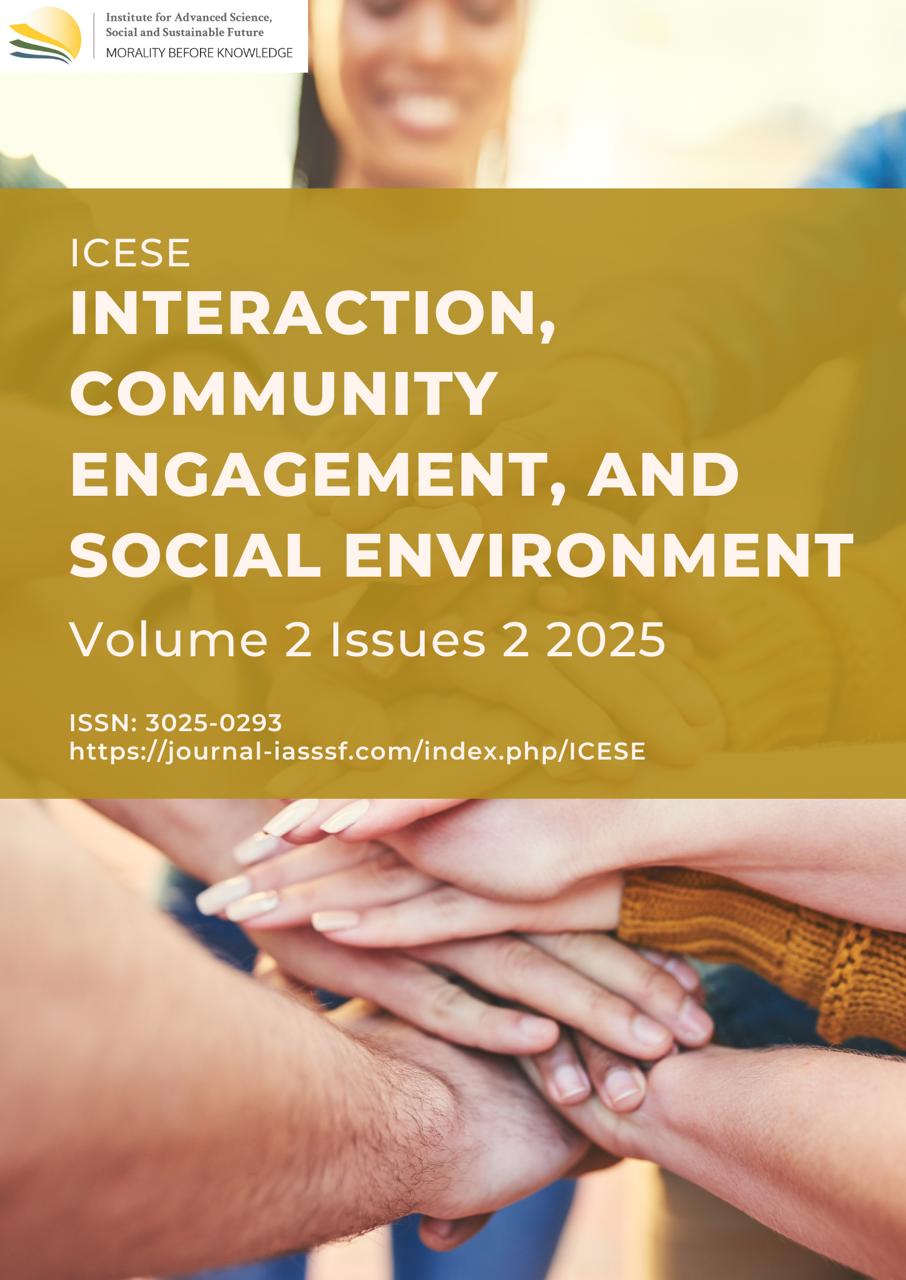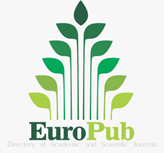Distributed outreach for literacy and access: Efforts to bridge accessibility, availability, and awareness of quality education for underprivileged groups to support local empowering and community development
DOI:
https://doi.org/10.61511/icese.v2i2.2025.1436Keywords:
access, education, empowermentAbstract
Background: Unequal access to quality education for underprivileged groups in Indonesia remains a critical issue, perpetuating cycles of poverty. Marginalized groups face significant challenges, including stigma, economic and geographic disparities, which hinder their access to education and literacy. Method: This study employs a qualitative approach, using secondary data from journals, articles, and existing surveys to explore the challenges marginalized groups face in accessing education. Findings: The analysis reveals that while economic and geographic barriers are prominent, a lack of government focus on local empowerment exacerbates the problem. The existing approaches do not sufficiently address the root causes or involve marginalized communities in meaningful ways. Conclusion: The study suggests that a more inclusive approach is needed, such as the DORA (Distributed Outreach for liteRacy and Access) program. DORA aims to promote widely distributed education, enhance literacy awareness, and foster local empowerment and development within marginalized communities. Novelty/Originality of this Study: This study introduces the DORA program as an innovative solution to the persistent educational challenges faced by marginalized groups. By emphasizing local empowerment and widespread literacy efforts, it offers a fresh perspective on addressing educational inequality in Indonesia.
References
Association of Southeast Asian Nations (ASEAN). (2023). Asean Statistical Yearbook 2023. The Asean Secretariat.
Archer, D., & Newman, K. (2016). Communication and Power: The Role of Education in Development. Routledge.
BPS. (2023). Angka Partisipasi Murni (APM) Menurut Provinsi dan Jenjang Pendidikan, 2021-2023. Badan Pusat Statistik. https://www.bps.go.id/id/statistics-table/2/MzA0IzI=/angka-partisipasi-murni--apm--menurut-provinsi-dan-jenjang-pendidikan.html
BPS. (2024a). Tingkat Penyelesaian Pendidikan Menurut Jenjang Pendidikan dan Provinsi, 2021-2023. Badan Pusat Statistik. https://www.bps.go.id/id/statistics-table/2/MTk4MCMy/tingkat-penyelesaian-pendidikan-menurut-jenjang-pendidikan-dan-provinsi.html
BPS. (2024b). Gross Enrolment Ratio (GER) in Tertiary Education by Urban-Rural Classification, 2023-2024. Badan Pusat Statistik. https://www.bps.go.id/en/statistics-table/2/MTQ0NSMy/gross-enrolment-ratio--ger--in-tertiary-education-by-urban-rural-classification.html
BPS. (2024c). Jumlah Penduduk Miskin (Ribu Jiwa) Menurut Provinsi dan Daerah, 2024. Badan Pusat Statistik. https://www.bps.go.id/id/statistics-table/2/MTg1IzI=/jumlah-penduduk-miskin--ribu-jiwa--menurut-provinsi-dan-daerah.html
BPS. (2024d). Jumlah Sekolah, Guru, dan Murid Sekolah Dasar (SD) di Bawah Kementerian Pendidikan, Kebudayaan, Riset, dan Teknologi Menurut Provinsi, 2023/2024. Badan Pusat Statistik. https://www.bps.go.id/id/statistics-table/3/VWtKTmFFbDZaSFJWWVhOYU16WmhaRzlCYlM5Wlp6MDkjMw==/jumlah-sekolah--guru--dan-murid-sekolah-dasar--sd--di-bawah-kementerian-pendidikan--kebudayaan--riset--dan-teknologi-menurut-provinsi.html?year=2023
BPS. (2024e). Rata Rata Upah Gaji (Rupiah), 2024. Badan Pusat Statistik. https://www.bps.go.id/en/statistics-table/2/MTUyMSMy/rata-rata-upah-gaji.html
Biesta, G. J. (2015). Beautiful risk of education. Routledge.
Buabeng, I., & Amo-Darko, B. (2024). Bridging the Gap: Enhancing Equitable Access to Quality Education for Marginalized Communities in Ghana. American Journal of Educational Research, 12(11), 427-438. https://doi.org/10.12691/education-12-11-3
Darling-Hammond, L. (2015). The flat world and education: How America's commitment to equity will determine our future. Teachers College Press.
Direktorat Sekolah Dasar Kementerian Pendidikan dan Kebudayaan. (2024). Program Afirmasi Sekolah Dasar. Direktorat Sekolah Dasar Kementerian Pendidikan dan Kebudayaan.
Dweck, C. S. (2016). Mindset: The New Psychology of Success. Ballantine Books.
Farrukh, A., & Sajjad, A. (2023). A Critical Review of Literature Review Methodologies. Advancing Methodologies of Conducting Literature Review in Management Domain, 2, 103-123. https://doi.org/10.1108/S2754-586520230000002006
Freire, P. (2014). Pedagogy of Hope: Reliving Pedagogy of the Oppressed. Bloomsbury Academic.
Fullan, M. (2014). The Principal: Three Keys to Maximizing Impact. Jossey-Bass.
Fullan, M., & Quinn, J. (2016). Coherence: The Right Drivers in Action for Schools, Districts, and Systems. Corwin Press.
Ghimire, S. (2024). Importance of community-based initiatives in promoting literacy in the underdeveloped nations. Frost & Sullivan Institute.
Gorski, P. (2017). Reaching and Teaching Students in Poverty: Strategies for Erasing the Opportunity Gap. Teachers College Press.
Gustiani, D., Marom, A., & Nurcahyanto, H. (2022). Efektivitas Program Afirmasi Pendidikan Menengah (Adem) Papua dan Papua Barat (Studi di SMA Katolik Pendowo Magelang). Journal of Public Policy and Management Review, 11(3), 661-669. https://doi.org/10.14710/jppmr.v11i3.34863
Jimenez, R. L. (2020). Educated: A Memoir. Harvard Educational Review, 90(1), 145-147. https://doi.org/10.17763/1943-5045-90.1.145a
Karimah, A., & Susanti, H. (2022). Gender inequality in education and regional economic growth in Indonesia. Jurnal Ekonomi Pembangunan, 20(1), 1-14. http://dx.doi.org/10.29259/jep.v20i1.17841
Kementerian Pendidikan dan Kebudayaan. (2023, July 16). 200 Siswa ADEM Daerah Khusus di Enam Provinsi Jalani Pembekalan Wawasan Kebangsaan. Biro Kerja Sama dan Hubungan Masyarakat Sekretariat Jenderal Kementerian Pendidikan, Kebudayaan, Riset, dan Teknologi. https://www.kemdikbud.go.id/main/blog/2023/07/200-siswa-adem-daerah-khusus-di-enam-provinsi-jalani-pembekalan-wawasan-kebangsaan
Kementerian Pendidikan dan Kebudayaan. (2024). Penyaluran Program Indonesia Pintar 2024. Pusat Layanan Pembiayaan Pendidikan Kementerian Pendidikan, Kebudayaan, Riset Dan Teknologi. https://pip.kemdikbud.go.id/penyaluran?tahun=2024
Muttaqin, T. (2018). Determinants of unequal access to and quality of education in Indonesia. Jurnal Perencanaan Pembangunan: The Indonesian Journal of Development Planning, 2(1), 1-23. https://doi.org/10.36574/jpp.v2i1.27
Nassaji, H. (2015). Qualitative and descriptive research: Data type versus data analysis. Language teaching research, 19(2), 129-132. https://doi.org/10.1177/1362168815572747
Nasution, M., & Wulandari, S. (2020). Analisis Ringkas Cepat Belanja Pendidikan Indonesia Belanja Besar Belum Optimal. Pusat Kajian Anggaran Badan Keahlian Sekretariat Jenderal DPR RI 2020. https://www.dpr.go.id/
National Center for Education Statistics. (2022). Description of the PISA Reading Literacy Proficiency Levels: 2022. National Center for Education Statistics (NCES). https://nces.ed.gov/
Novrita, J., Oktavia, R., & Sari, T. Y. (2025). Making ‘Taman Baca’Sustainable”, lessons learned from community-based non-formal education in Aceh, Indonesia. International Journal of Educational Development, 113, 103186. https://doi.org/10.1016/j.ijedudev.2024.103186
OECD. (2023). PISA 2022 Results (Volume I and II) - Country Notes: Indonesia. OECD. https://www.oecd.org/en/publications/pisa-2022-results-volume-i-and-ii-country-notes_ed6fbcc5-en/indonesia_c2e1ae0e-en.html
Rana, D. K. (2024). Quality Education for Underrepresented Groups: Bridging the Gap. International Journal of English Literature and Social Sciences, 9(1), 212-219. https://dx.doi.org/10.22161/ijels.91.28
Robinson, K. (2015). Creative Schools: Revolutionizing Education from the Ground Up. Viking.
Sari, N. P. A. C. M., & Siagian, T. H. (2021). Welfare Index of Person with Disabilities in Indonesia, 2018. In Proceedings of The International Conference on Data Science and Official Statistics, 2021(1), 632-644. https://doi.org/10.34123/icdsos.v2021i1.225
Sen, A. (2014). Development as Freedom. Anchor Books.
Shi, Z., & Qamruzzaman, M. (2022). Re-visiting the role of education on poverty through the channel of financial inclusion: Evidence from lower-income and lower-middle-income countries. Frontiers in Environmental Science, 10, 873652. https://doi.org/10.3389/fenvs.2022.873652
Wagner, T. (2015). Creating Innovators: The Making of Young People Who Will Change the World. Scribner.
Downloads
Published
How to Cite
Issue
Section
License
Copyright (c) 2025 Pratiwi Khairunnisa, Fairuzzidan Fadhil Hanif, Charly Prasetyo

This work is licensed under a Creative Commons Attribution 4.0 International License.
















